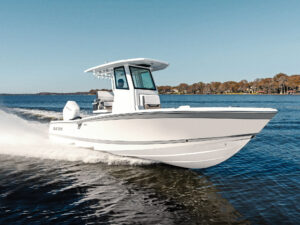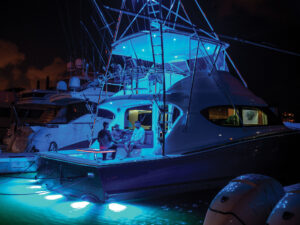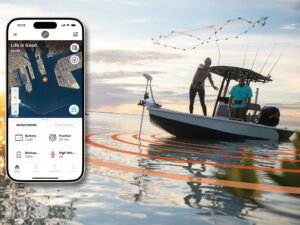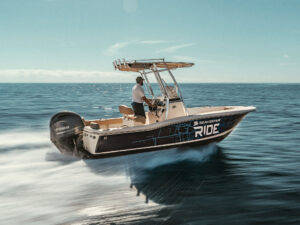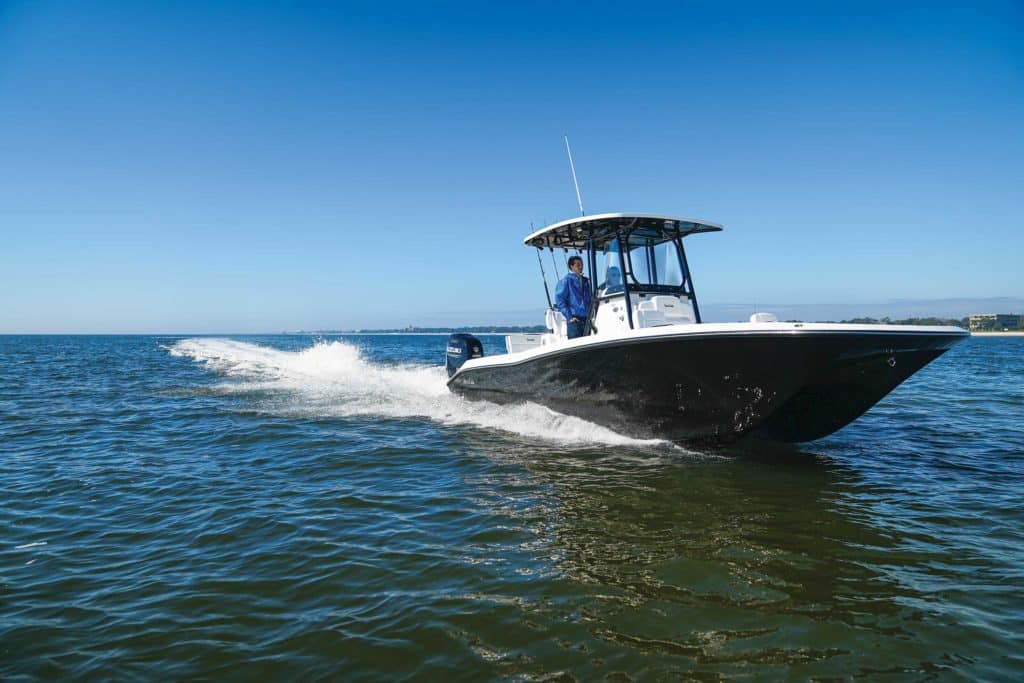
The seaworthiness of the Sea Cat multihull design—with its enclosed racing transom—takes the worry out of offshore jaunts, while its 14-inch draft opens the door to skinny-water forays, and the hull’s stability makes it a superb platform for fishing at any depth, cruising with the family, or enjoying a sandbar picnic.
The lamination schedule formulated by one of the top naval engineering firms, quality fit and finish, premium hardware including Gemlux stainless-steel friction hinges on all lids and hatches, and tinned copper wiring ensure years of trouble-free boating. Much like a big sport-fisher, the Sea Cat is set up with two fuel tanks and two cranking batteries, plus a house battery, enabling each of its twin outboards to run on either of the separate systems.
Sporting clean lines and clutter-free spaces, the layout includes a sizable forward casting deck with ample storage divided into four compartments, one of which serves as a dedicated anchor locker. Two raised outboard boxes that extend aft augment stowage and turn into twin seats or loungers with the optional cushions and removable backrests. Between them, a step leading to the forward deck houses another large compartment, ideal for stashing dock lines and safety gear.
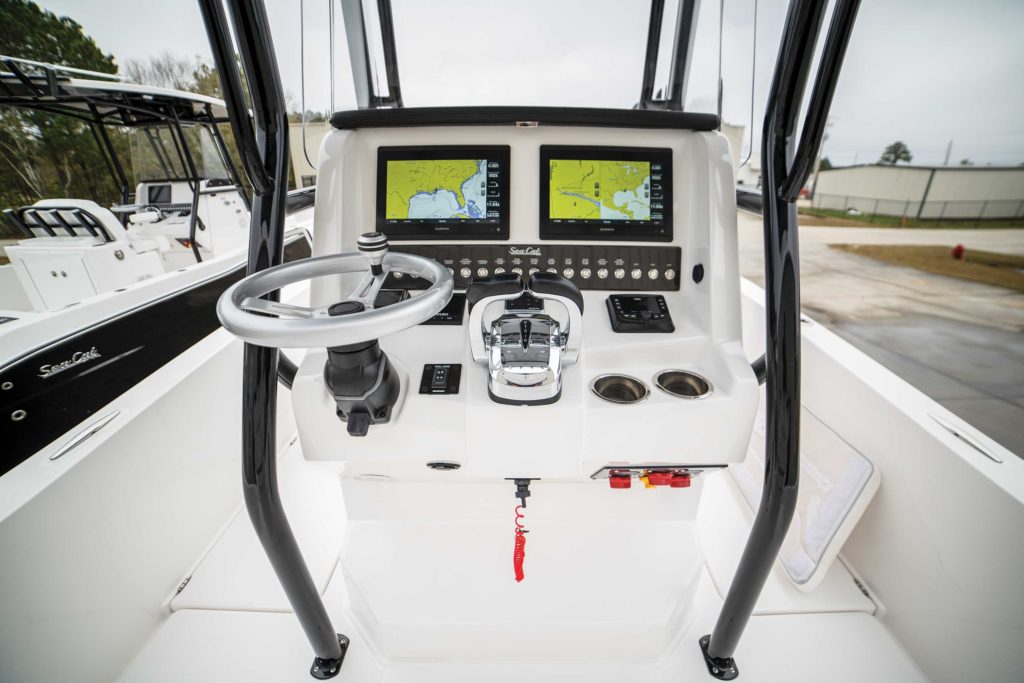
A step back, the forward console seat incorporates a full-height backrest, seats two comfortably, and hides a substantial insulated box underneath that serves as a cooler or accommodates three deep-cycle batteries for a bow-mount trolling motor, leaving enough space for the crew to move from bow to stern unencumbered and gain easy access to the pair of in-floor fish boxes between the console and the port and starboard gunwales, both long enough to fit big pelagics and plumbed with Gulper Grouper waste pumps.
The center console features a wraparound windshield, custom brow with red map light, and dash roomy enough for dual 12-inch multifunction displays, 18-position waterproof-switch panel, stereo and more. SeaStar hydraulic tilt steering and a Livorsi three-spoke steering wheel come standard, and our test boat came with the optional fiberglass T-top with powder-coated aluminum frame, complete with electronics box, LED flood, spreader and overhead lights, and four-rod rocket launcher.
Our test Sea Cat also included a fiberglass helm-seating module with dual adjustable seats with flip-up bolsters and fold-down armrests, tackle station, and aluminum four-rod rocket launcher, a definite upgrade over the standard-issue aluminum leaning post. A bench-style seat accommodates two comfortably at the stern. When it comes time to fish, the backrest folds down flush with the abbreviated aft casting deck, which incorporates twin 25-gallon lighted livewells in the corners, both with clear lids and seawater blue interiors.
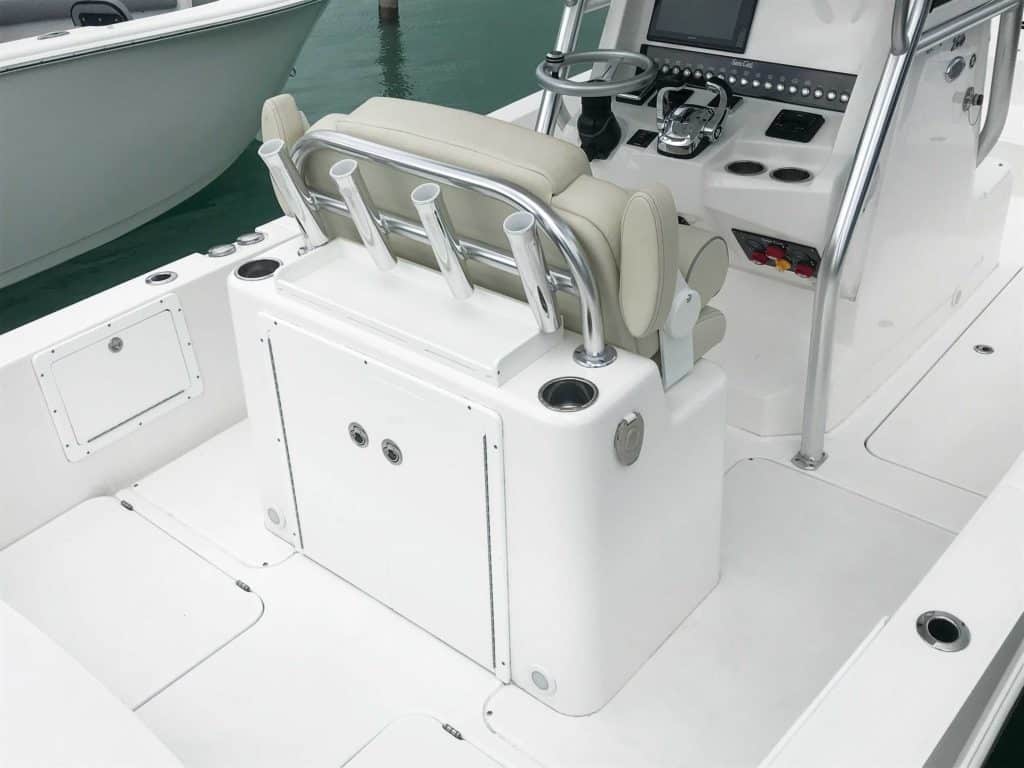
Port and starboard hatches take up most of the cockpit floor space aft of the helm, and a raw-water washdown with 20-foot coiled hose and nozzle, and six flush-mount rod holders on the gunwales—all with overboard drains—complete the 260 Hybrid’s list of standard equipment. Nevertheless, additional rod and drink holders, a forward livewell, freshwater shower with 10-gallon tank, electronic power steering, indirect cockpit lighting, and two types of removable ladders are among the most popular available options.
As for performance, the Sea Cat dazzled with its hole shot and acceleration during our test in Miami’s Biscayne Bay. Powered by twin Suzuki 300s, the 26-footer jumped on plane and scooted from zero to 30 mph in 7.9 seconds with minimal bow lift, and wasted no time climbing to 65.6 mph at wide-open throttle.
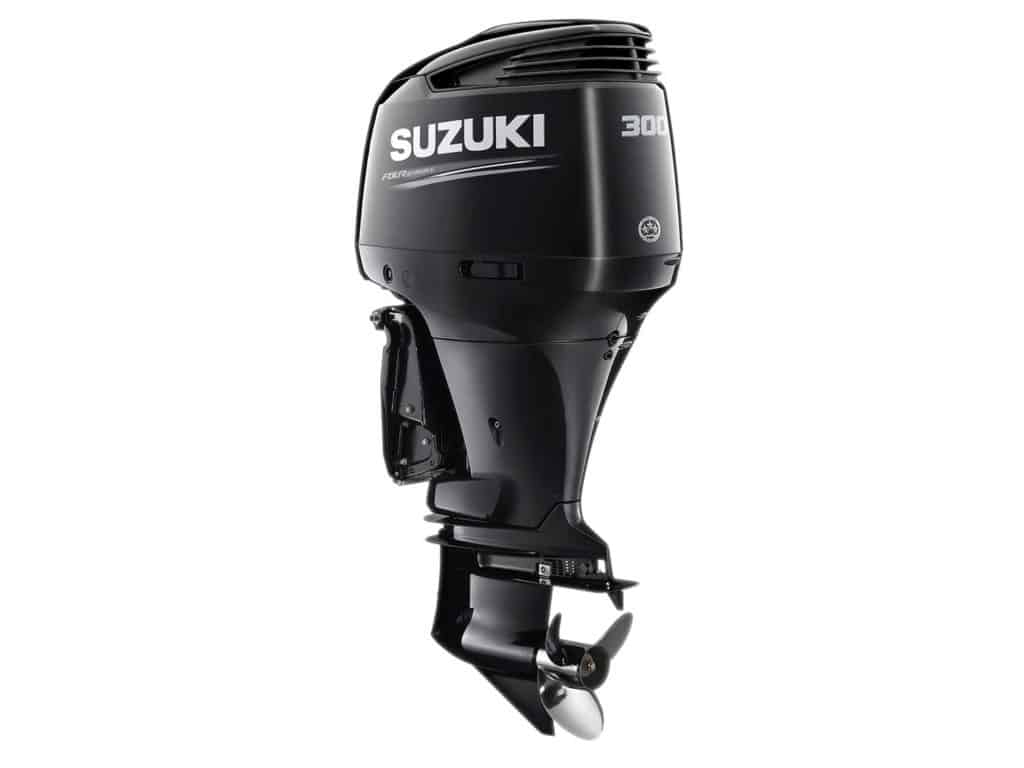
Driving the Sea Cat is a pleasure. With the pair of Suzuki 300s mounted far apart and power steering eliminating feedback, the boat proved agile and responsive. On S-turns and tight curves, it maneuvered promptly and efficiently with little more than fingertip pressure on the steering wheel.
In typical catamaran fashion, the 260 Hybrid took on waves and large wakes with ease, always coming down softly without jolts, pounding or rattling. Spray, which on the Sea Cat starts even with the helm at planing speed and pushes some 2 feet aft at 5,000 rpm, never made it over the gunwales, no matter our heading in relation to the wind.
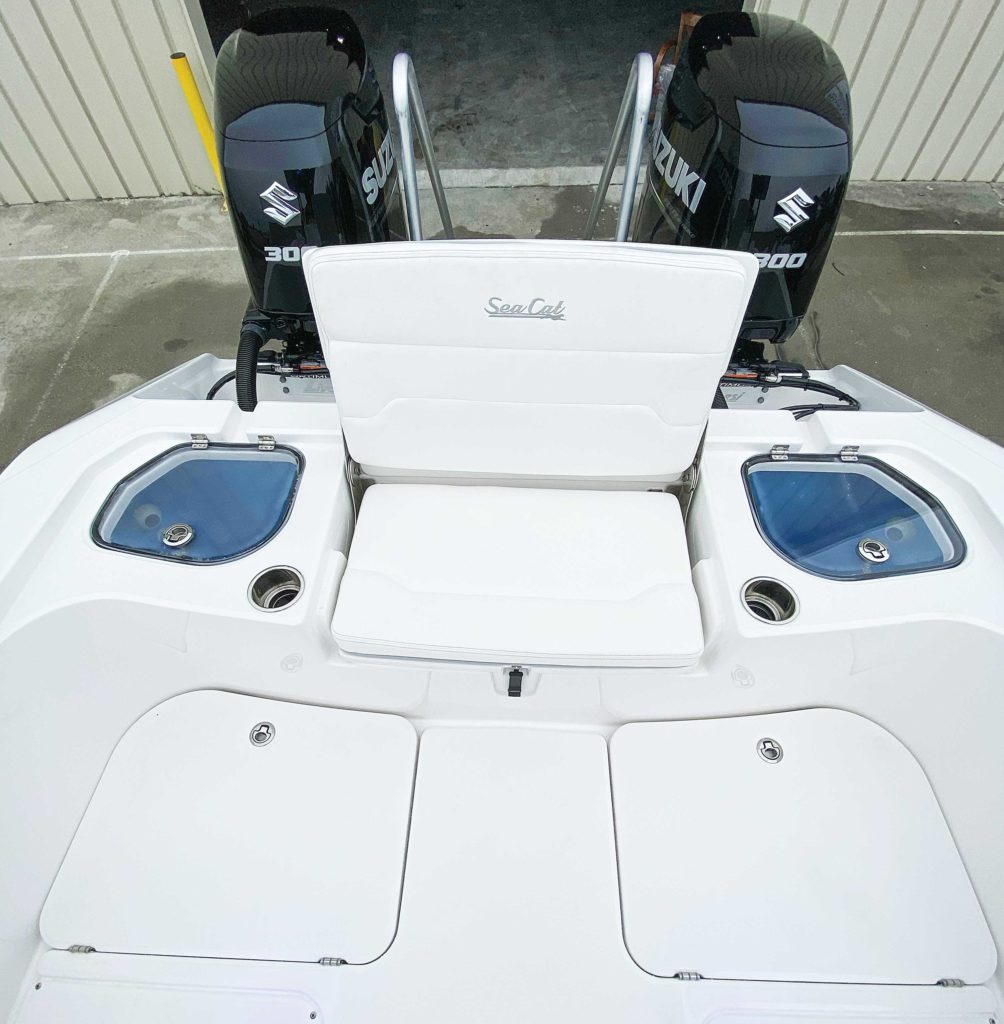
The 260 left a great impression. It’s clearly designed and built for discerning anglers who balk at the thought of limitations on the waters and species they target. If only the right dose of inshore, nearshore and offshore fishing will suffice, give the Sea Cat a close look.
Specs
Length: 26′ Beam: 8′6″ Draft: 14″ Fuel: 120 gal. Weight: 4,900 lb. Max HP: 600 Price: $122,697 w/ twin Suzuki 140s Sea Cat: seacatboats.com
Test Conditions
Weather: Partly cloudy Location: Virginia Key, Florida Wind: South 11 knots Sea State: 1- to 2-foot chop Test Load: Two adults, 72 gallons of fuel

